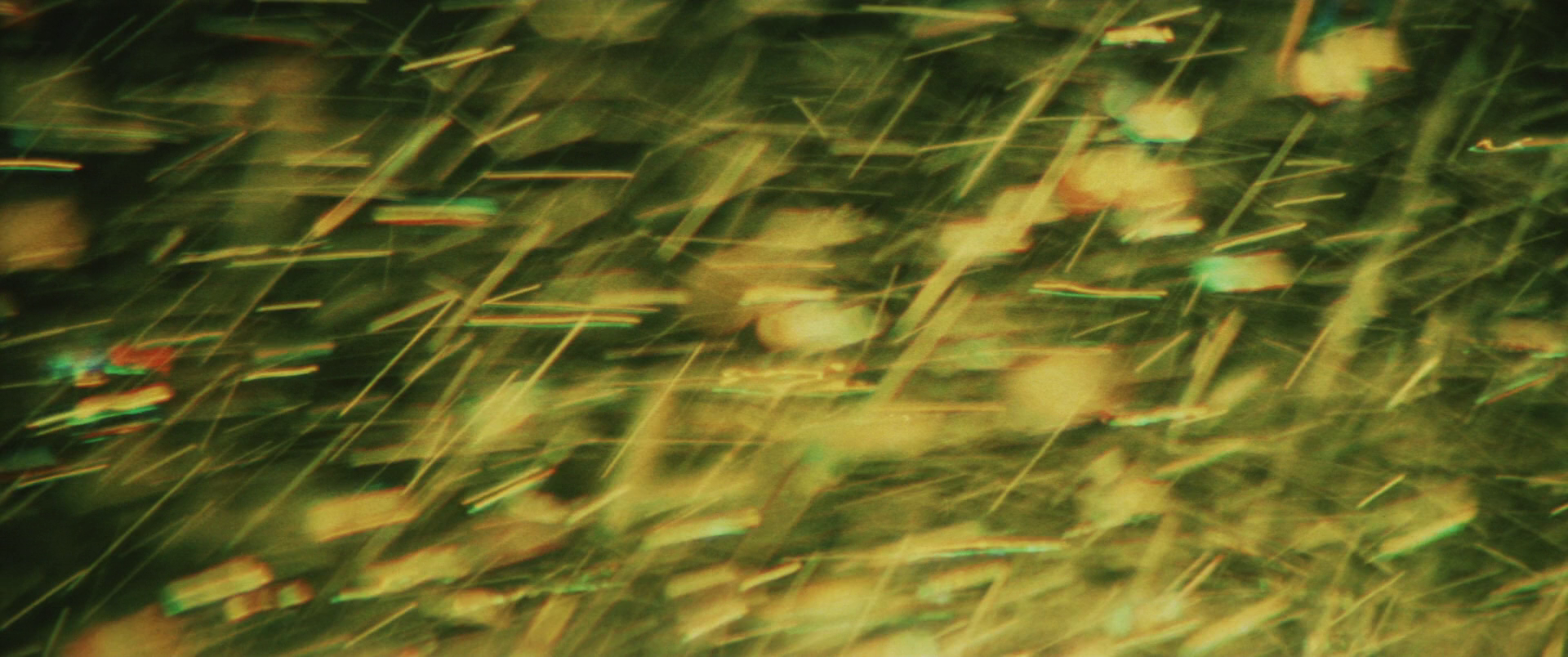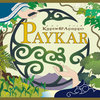In Translation | 3 mangaka, 30 movies
Atsushi Kaneko, Daisuke Igarashi, and Taiyo Matsumoto share 10 of their favorite movies
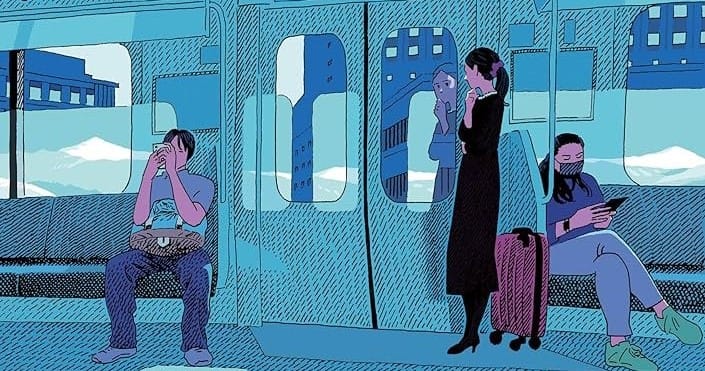
In issues 56 and 57 of the Japanese magazine Free Style, roughly 50 manga artists were asked to share ten of their “extremely private favorite movies”. And today I’d like to show the answers given by three major names in the industry: Atsushi Kaneko, Daisuke Igarashi, and Taiyo Matsumoto.
Enjoy!
Atsushi Kaneko
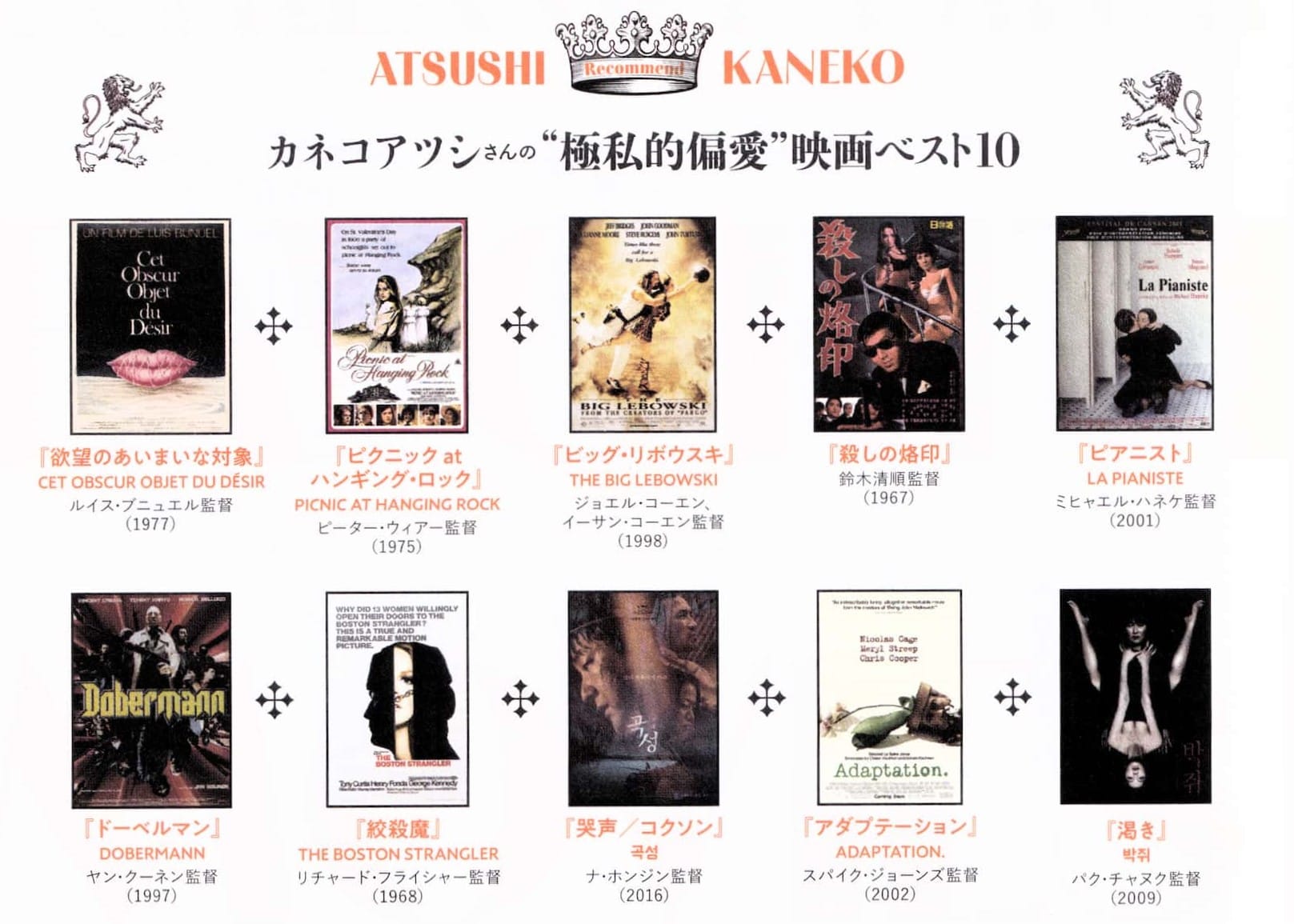
Born in Yamagata prefecture and debuted in 1988. Famous for titles including BAMBi, SOIL, and Deathco. The series Wet Moon won a French Association of Comics Critics award in the Asian media division. His manga EVOL is currently being published by Comic Beam.
That Obscure Object of Desire
Directed by Luis Buñuel (1977)
The bit near the end where the heroine shows up in a bright red coat left such a huge impression on me that I borrowed the imagery for my manga Wet Moon, but when I rewatched the film, I realized the coat was actually white. More like That Obscure Object of Memory, huh.
Picnic at Hanging Rock
Directed by Peter Weir (1975)
A movie based on a real case where a group of schoolgirls disappeared. With the structure of a perfectly shaped donut, it ignores the particulars of the case itself to instead focus on the periphery, which is painstakingly detailed. I love movies with interesting shapes like this.
The Big Lebowski
Directed by Joel and Ethan Coen (1998)
There are a lot of ways one might think about or mull over after the credits have rolled on a great film, but when it comes to this, there's only one proper response: "I'm gonna drink vodka with milk." Everyone who's seen the movie knows what I'm talking about.
The Piano Teacher
Directed by Michael Haneke (2001)
I was little worried for myself after I couldn’t stop laughing at all the insane places the story goes. I kept wondering, “I shouldn’t be reacting like this, should I?” So later, when I heard the director say, “I intended for it to be a comedy,” I felt a huge sense of relief.
Branded to Kill
Directed by Seijun Suzuki (1967)
A movie about a hitman who loves the smell of cooked rice and finds ecstasy in hugging his rice cooker; one that switches between the coolest scenes out there and plot developments so absurd that they have to be a joke.
Dobermann
Directed by Jan Kounen (1997)
Though it’s a movie that’s all flash and style, it taught me how cool it is to be over the top. It really helped me get over my embarrassment when drawing action scenes for BAMBi.
The Boston Strangler
Directed by Richard Fleischer (1968)
From the director of populist entertainment like 20,000 Leagues Under the Sea (1954) comes this true crime film told using experimental techniques. With a real “no way in hell are we filming this normally” energy, the whole movie is caked in a spine-tingling atmosphere.
The Wailing
Directed by Na Hong-jin (2017)
Deftly dodges any attempts to pigeon-hole it as “this” or “that” kind of movie, guiding you in one direction only to stop and throw you in another over and over until its shocking ending. Had me in awe, saying “God this is clever!”
Adaptation
Directed by Spike Jonze (2002)
About a screenwriter struggling to write his next script, this is like someone captured the nightmare shared by every creative and turned it into a movie . Got me shouting “that ain’t funny!” while laughing my head off. By the end I felt really refreshed.
Thirst
Directed by Park Chan-wook (2010)
For the first half, this is a very modern feeling horror that paints vampirism as a sort of infectious disease, but the catharsis felt when it suddenly transforms into something much more classical in the back half is unreal. The way it takes these dramatic shifts in tone gives the impression that this is a movie that has a liberated sense of self-confidence. And it earns it—I kept thinking things like “wow they really planned this all out,” and “damn that’s good.”
Daisuke Igarashi
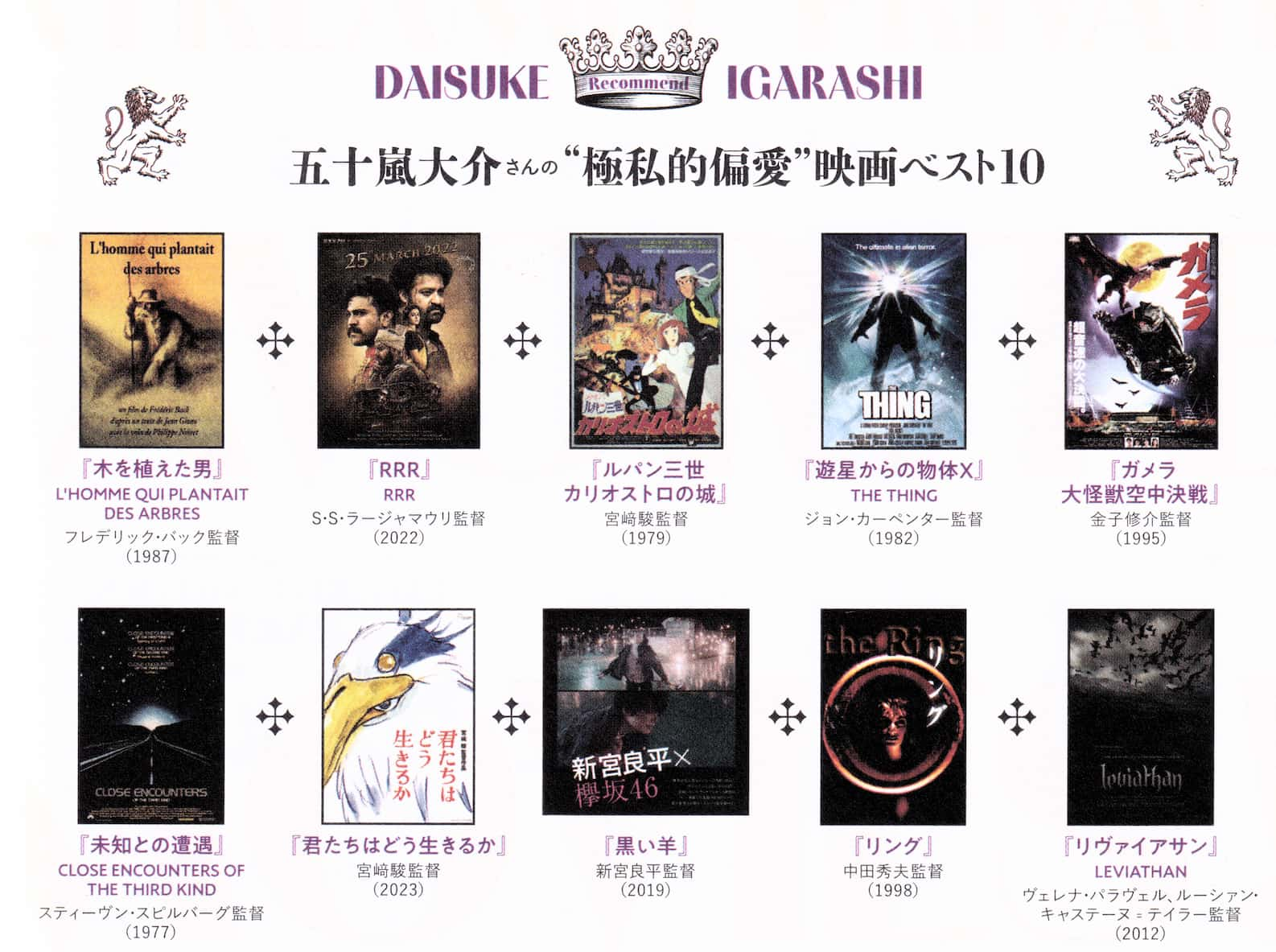
Born in Saitama. Major titles include Hanashippanashi and Little Forest. Both Witches and Children of the Sea won the excellence award at the Japan Media Arts Festival. Currently, his series Kamakura Bake Neko Club is being serialized in Be Love.
The Man Who Planted Trees
Directed by Jean Giono (1987)
A full and beautiful film, depicting the world as something that shifts and flows like water and the air.
RRR
Directed by S. S. Rajamouli (2022)
Such powerful images! When writing stuff like Witches and SARU, this was the kind of feeling that was running through my head. It’d be so fun to have something made into an Indian film, with all the singing and dancing.
Lupin III: The Castle of Cagliostro
Directed by Hayao Miyazaki (1979)
Art that depicts the overwhelming power of film. A foundational work for me.
The Thing
Directed by John Carpenter (1982)
I’m entranced by its terrible and beautiful model-work, and its explosive rush of life.
Gamera: Guardian of the Universe
Directed by Shusuke Kaneko (1995)
Gamera, with his jet boosters and flying via spinning around, is completely absurd. But when he lands on the Fukuoka Dome here, you can’t help but think “Gamera really does exist.” The image of Gyaos on Tokyo Tower is wonderful in much the same way.
Close Encounters of the Third Kind
Directed by Steven Spielberg (1977)
As someone who grew up in the golden age of UFO programs on TV, this stunned me with its ideas of communication, rendered so realistically and beautifully.
The Boy and the Heron
Directed by Hayao Miyazaki (2023)
An air-raid, a fire, a bike, a home, a heron. An astounding portrait.
Kuroi Hitsuji
Directed by (2010)
A Keyakizaka46 music video. Finding courage and comfort from tragedy in the freedom born from music, dance, and film all coming together.
Ring
Directed by Hideo Nakata (1998)
The horror of empty space. Analog media rendered raw and repulsive. If I saw anything scarier than this, it would seriously affect my ability to live a normal life, so I’ve basically stopped watching horror.
Leviathan
Directed by Lucien Castaing-Taylor and Véréna Paravel (2012)
A documentary from Harvard's Sensory Ethnography Lab examining the cruel fishing practices of a fishing trawler. Rather than regurgitate facts, the film avoids explanation while emphasizing the latent power of the images and sounds shown. I want to make manga like this, like something from an unknown planet…
Taiyo Matsumoto
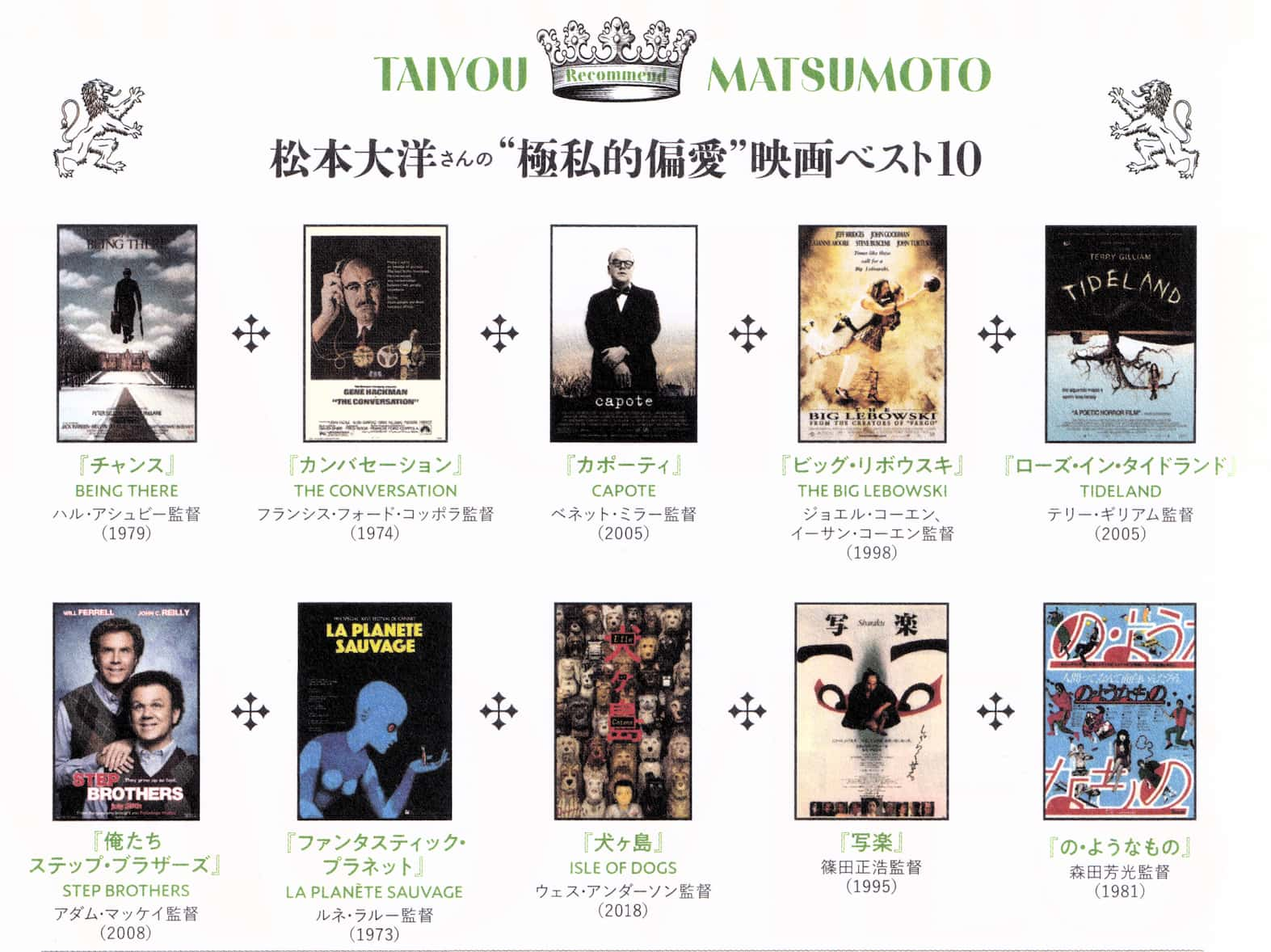
Born in Tokyo in 1967. In 1987, debuted in Morning Party. Significant works include Tekkonkinkreet, Ping Pong, Sunny, and Tokyo Higoro. Takemitsuzamurai was a recipient of the Tezuka Osamu Cultural Prize.
Being There
Directed by Hal Ashby (1979)
Peter Sellers has this look about him that’s funny but also carries a real sadness. Seeing him, I always think, “now that’s an English person”. His character here, Chance, is so simple, so peaceful, and the people who he comes across who help him are all treated so lovingly. I love that. Watching Being There is like watching an urban fairy tale.
The Conversation
Directed by Francis Ford Coppola (1974)
Coppola’s cool and cruel masterpiece released around the same time as The Godfather Part II. The dialogue is tense, as are the events that unfold, but it’s the performances bringing it all to life that make the whole thing almost unbearable. The brilliance shown by a young Coppola and Gene Hackman is positively blinding.
Capote
Directed by Bennett Miller (2005)
A delicate, beautifully filmed and acted movie surrounding Capote writing In Cold Blood. Thanks to Phillip Seymour Hoffman’s performance, you feel the work Capote did burrow painfully deep into the heart. I so very much wish we could have seen more performances from him.
The Big Lebowski
Directed by Joel and Ethan Coen (1998)
Out of all the Coen Brother’s movies, this one is my favorite. I’ve always wished I could be like the protagonist, The Dude, who no matter what mess he gets wrapped up in, takes life nice and easy. So cool! And not just him; all the characters, like the bowling team’s macho Walter or Steve Buscemi’s pathetic Donnie, are absolutely fantastic.
Tideland
Directed by Terry Gilliam (2005)
The adults of this movie are all bizarre outcasts of society, and looking at it objectively, the story presented here is a cruel one, but the world of the protagonist—a young named Rose who exists with one foot in delusion—is genuinely charming, even when she’s scared, and the talks she has with a bunch of doll heads have a great humor to them. Still, it does have scenes filled with Gilliam’s classic grotesque sensibilities, so viewers who don’t handle that kind of stuff very well might want to beware…
Step Brothers
Directed by Adam McKay (2008)
An older couple gets married and their 39- and 40-year-old NEET sons suddenly have to live together under the same roof. It’s a strange set-up, but Will Ferrel and John C Reilly play the two sons like elementary schoolers, acting off of each other with an impish glee that is absolutely hilarious. I feel an odd sense of encouragement watching this two, like maybe it’s possible to be a good adult while still acting like them.
Fantastic Planet
Directed by René Laloux (1973)
I adore this animated movie. The design of the characters and fauna portrayed here is so fantastically unique. With meditative scenes, a singular and wonderful worldview permeates every inch of this picture. Every time I come back to it and witness innocent cruelty of the giant Traags, I feel a pang in my heart, like I’m watching a reflection of myself as a child.
Isle of Dogs
Directed by Wes Anderson (2018)
Stop-motion animation depicting a mysterious near-future Japan. The designs for the dolls of all of the dogs that show up, as well as the protagonist Atari, are as cute as it gets (as is Atari’s way of speaking!). Thanks to the director’s obsessive attention to detail, I constantly end up pausing it.
Sharaku
Directed by Masahiro Shinoda (1995)
A movie that makes the Edo period feel like something that happened yesterday instead of hundreds of years ago. I've always had this admiration for ukiyo-e artists as if they are my professional peers, and by watching this movie it really felt like I was able to meet the greats like Utamaro and Bakin. Also, Frankie Sakai's Tsutaya Juzaburo is super cool.
Something Like It
Directed by Yoshimitsu Morita (1981)
I love this movie so much. I’ve lost count of how many times I’ve seen it, and every time I do, I think about how wonderful it’d be to live like its hero, Shintoto. Director Morita works with such an empathetic eye as he paints the heartbreaking hopes and anxieties of a group of young people aiming to become professional rakugo performers. Isao Bidou’s character, Shinkome, and Kumiko Akiyoshi’s Elizabeth are such a delight, and the way it captures the feel of the early 1980s is unparalleled.
Music of the Week: PAYKAR by Kapiw&Apappo

Driving through Japanese fields and mountains on narrow winding roads while listening to Ainu folk are some of the most profound moments I’ve had with music. On this album, Kapiw&Apappo perfectly capture why, half the tracks stripped as far back as they can go with only hypnotic voices and hints of traditional Ainu instruments like the tonkori and mukkuri as accompaniment while the other half sneak in echoes, field recordings, and electronic soundscapes to create a sense that the whole world is still there, even in a recording. Beautiful, beautiful stuff.
Book of the Week: Happiness Comes From Eating, Sleeping and Waiting by Tori Mizugani
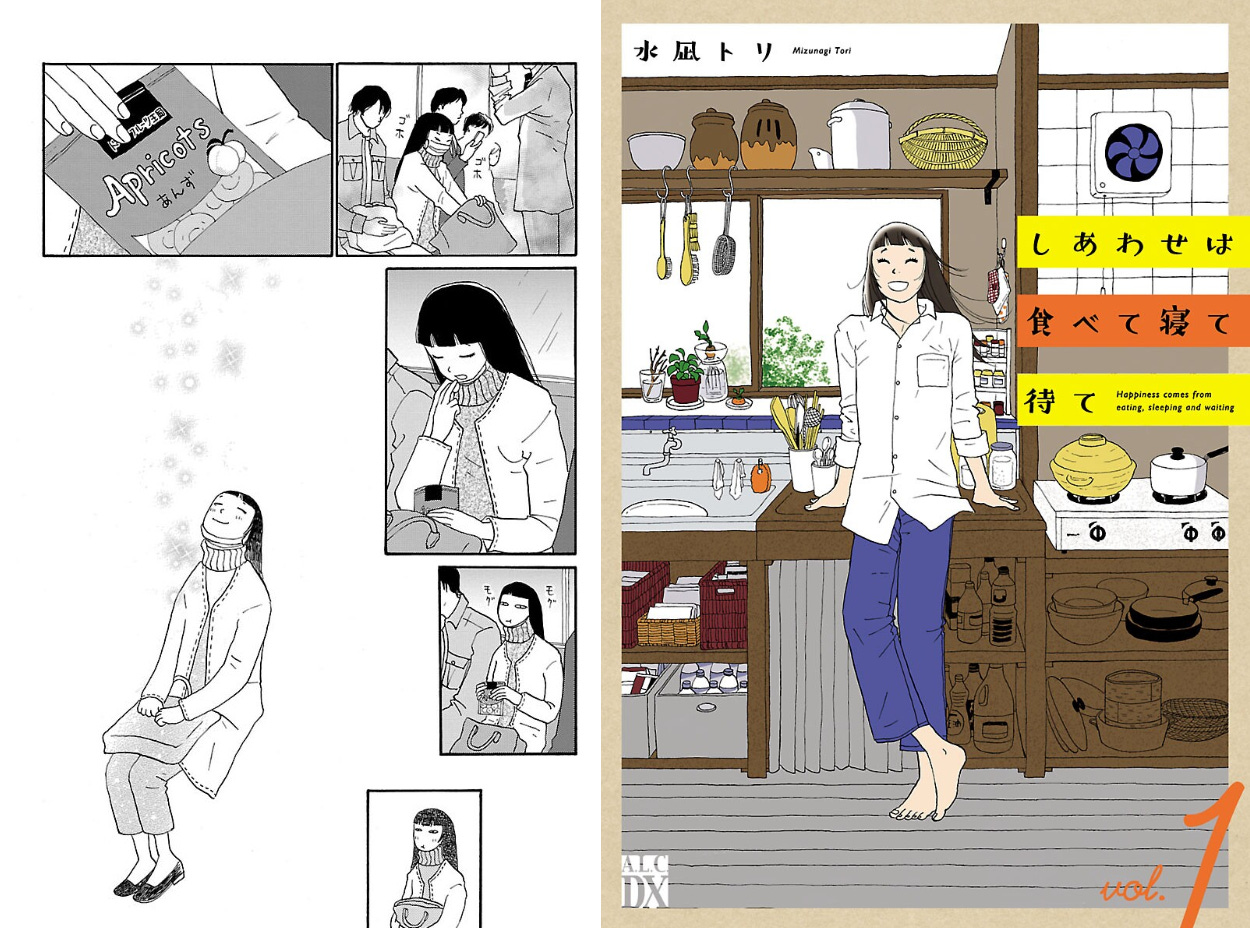
Name a title wiser and truer than this one, I dare you. Following a single woman in her late-30s whose life has stalled—thanks to chronic illness she’s all but given up on relationships both intimate and platonic, and is forever stuck with part-time jobs—discovering the minor joys and wonders the world holds after moving next door to a little old lady and her handsome son who loves cooking healthy meals. With simple and expressive art, astounding visual metaphors, buckets of relatable humor and a keen eye towards those small things we all do and feel, Happiness Comes… is the manga equivalent of a long bath after a hard day.
Movie of the Week: The Fish Tale (dir. Shuichi Okita, 2022)
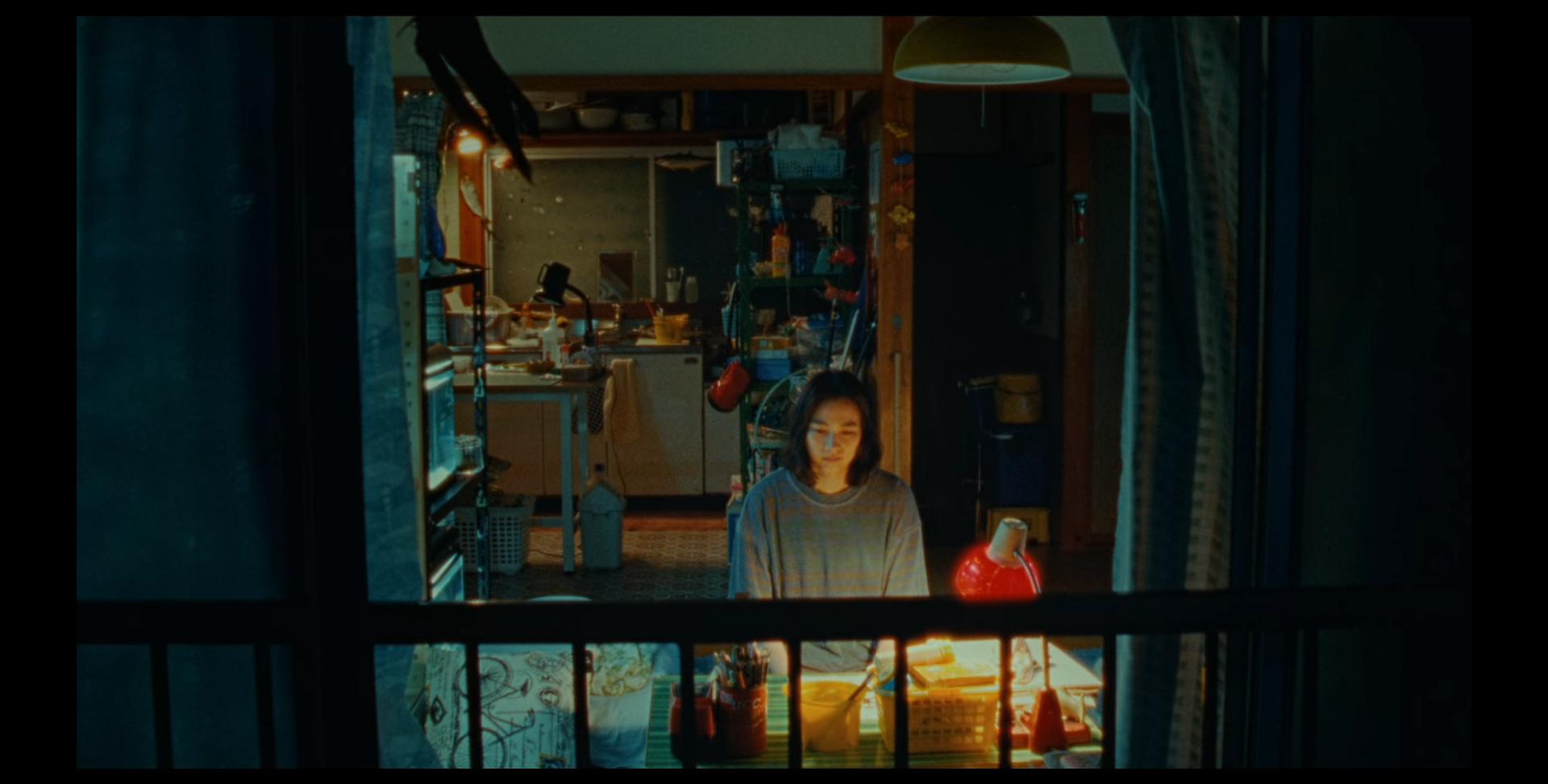
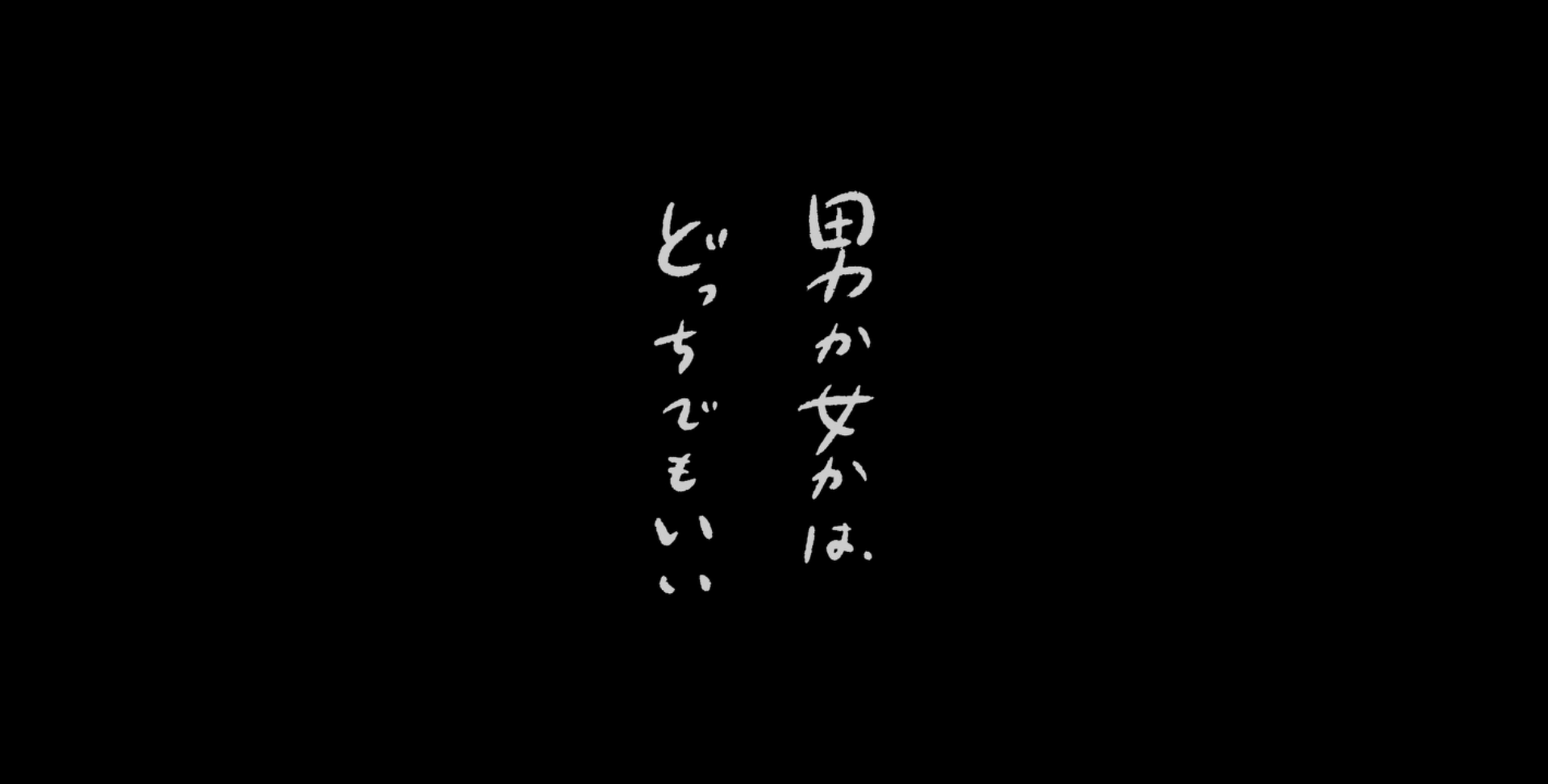
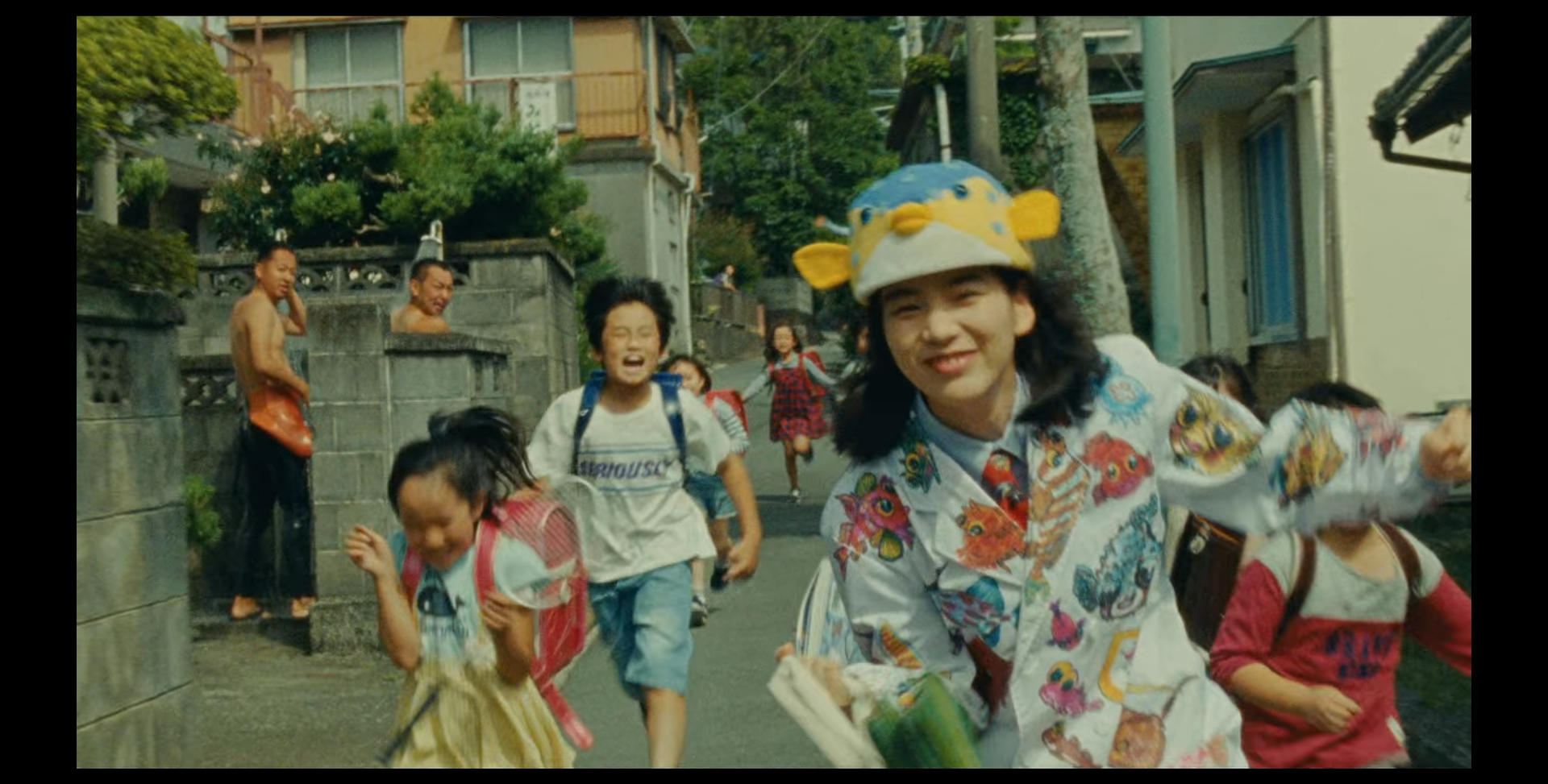
"Boy or girl, it doesn't really matter."
A highlight from 2022, this low-key comedy makes the quietly bold move of turning what should be a biopic of a guy who likes fish into a gentle metaphor celebrating queer acceptance and self-actualization. It’s nice and calm—happy to let the camera drift away from the action to pause on some nice clouds or a pretty flower instead—but also not naïve, sitting almost entirely with lower-income people with real problems who have to deal with life never giving them exactly what they want. A movie that believes with all of its soul in the potential goodness in people and which sees kindness as a radical act. When I left the theater the first time I saw it, the world seemed brighter.
Have thoughts about anything covered this week? Got a recommendation you’re dying to share? Want to tell me how handsome and cool I am? Leave a comment below!
oh, and here’s a translation of a behind-the-scenes deep dive of the original Donkey Kong’s development


